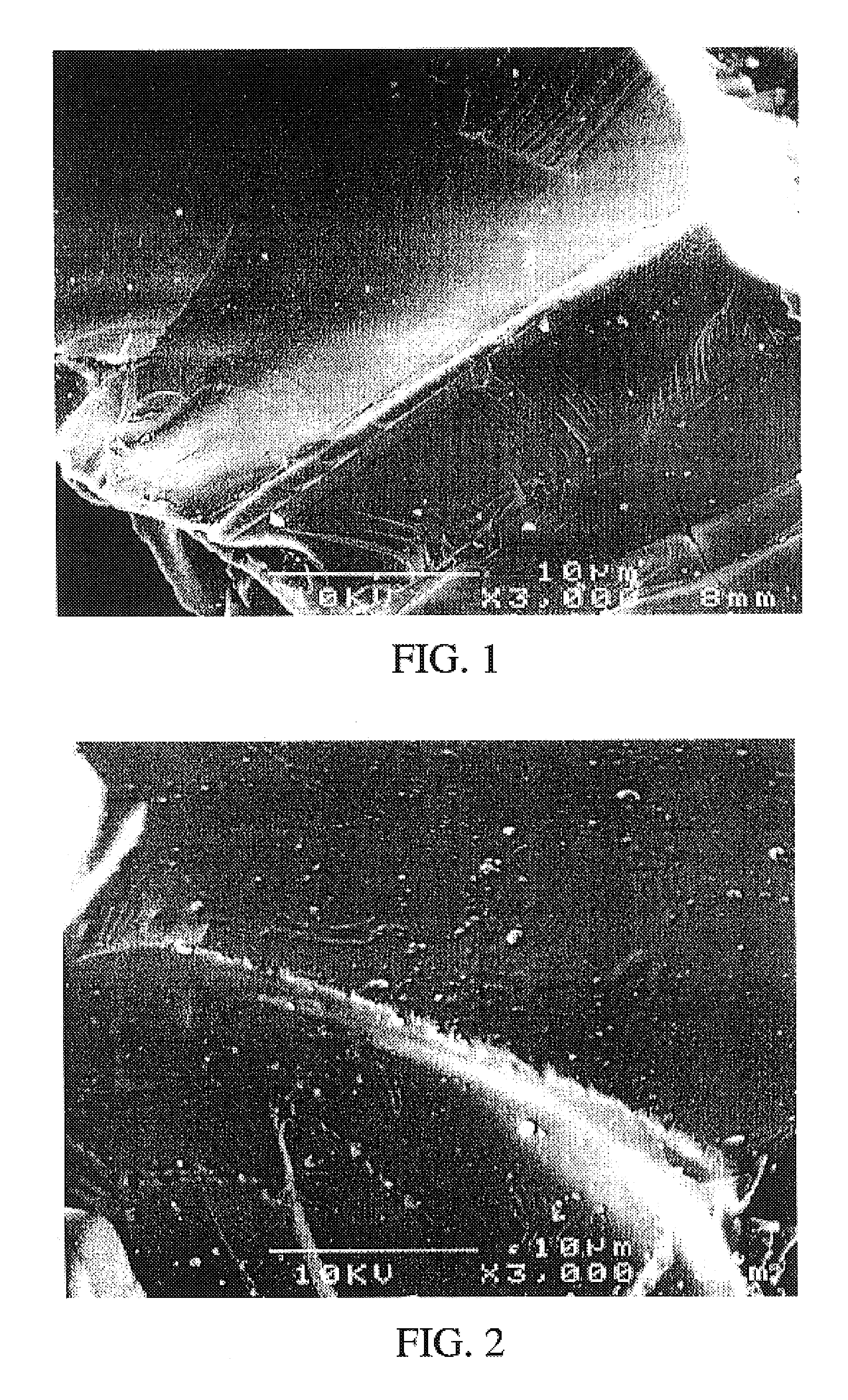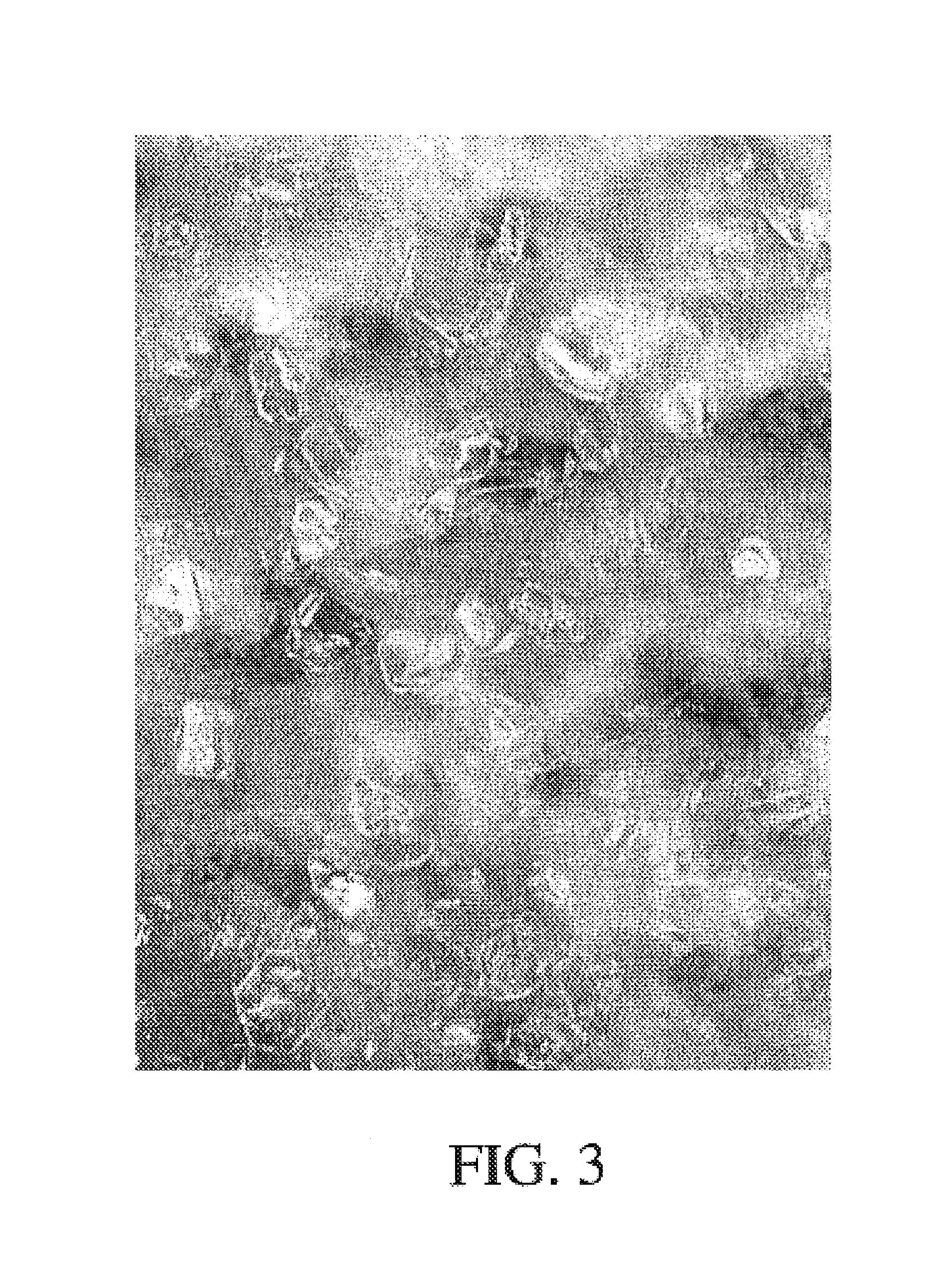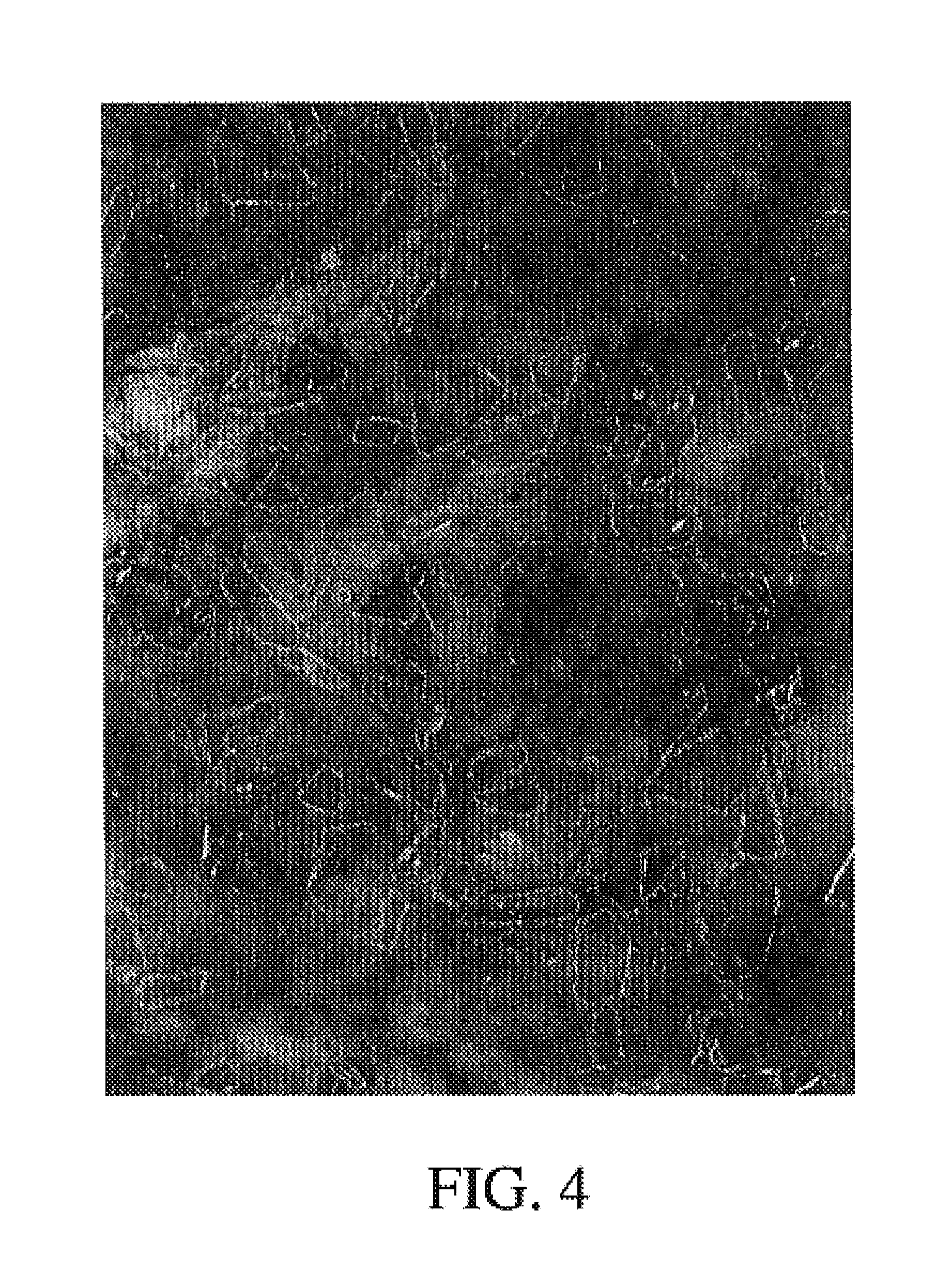Surface-coated hard material, production method for this, and use of the same
a technology of surface coating and hard material, which is applied in the field of surface coating hard material, can solve the problems of affecting the appearance of surface coating, etc., and achieves the effect of improving the visual properties of the lacquer and laminate coating, and reducing the risk of surface coating damag
- Summary
- Abstract
- Description
- Claims
- Application Information
AI Technical Summary
Benefits of technology
Problems solved by technology
Method used
Image
Examples
examples 1 – 5
EXAMPLES 1–5
[0019]1 kg pure white corundum (Alodur@ WSK, Treibacher Schleifmittel), F 280 granulation, was tempered at 4000° C. and then sprayed with a diluted, aqueous polysiloxane emulsion (Baysilone® oil emulsion H, Bayer Leverkusen) when in a drum mixer, after which it was mixed intensively for 20 minutes. The coated granular material was then dried for 20 minutes at 1200° C. in a convection oven. Subsequently, the total content Of Si02 and the proportion of polysiloxane on the surface of the grains was determined.
[0020]
TABLE 1Concentration seriesBaysilone OilTotal contentContent (%-wt)Ex.Emulsion HSiO2 (%-wt)polydimethylsiloxane11 ml in 15 ml H2O0.0320.02525 ml in 15 ml H2O0.1350.128315 ml (undiluted)0.5890.582430 ml (undiluted)1.3091.302560 ml (undiluted)2.7432.704 6*0.007*untreated comparison material
[0021]The best results in this series were obtained with Example 4. Descriptions were based on electron microscope imagery and measurements of wear values as compared to untreate...
PUM
| Property | Measurement | Unit |
|---|---|---|
| temperature | aaaaa | aaaaa |
| temperature | aaaaa | aaaaa |
| hardness | aaaaa | aaaaa |
Abstract
Description
Claims
Application Information
 Login to View More
Login to View More - R&D
- Intellectual Property
- Life Sciences
- Materials
- Tech Scout
- Unparalleled Data Quality
- Higher Quality Content
- 60% Fewer Hallucinations
Browse by: Latest US Patents, China's latest patents, Technical Efficacy Thesaurus, Application Domain, Technology Topic, Popular Technical Reports.
© 2025 PatSnap. All rights reserved.Legal|Privacy policy|Modern Slavery Act Transparency Statement|Sitemap|About US| Contact US: help@patsnap.com



